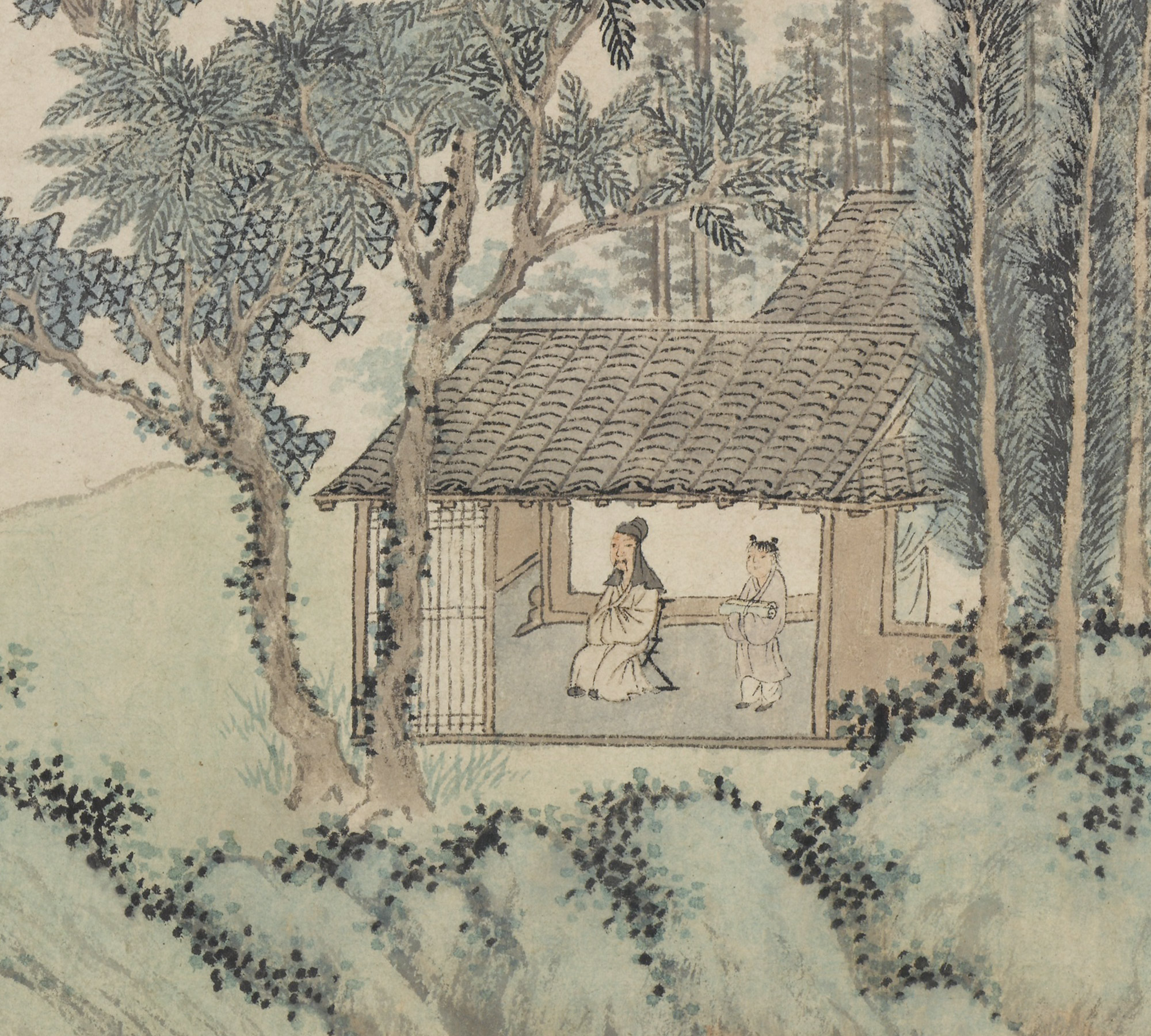Reclusion
Reclusion, the sometimes physical and more often mental withdrawal from worldly affairs, was a central part of literati practice. Along with lived experience, the acts of both painting and looking at paintings enabled cognitive reclusion. They offered imagined departures from mundane existence and were a preferred means to create and share idealized visions of seclusion with friends and other like-minded people. The sites of mental reclusion created through paintings were often used as spaces for artistic experimentation, sometimes resulting in highly expressive and often unconventional images. These locales could be artistic interpretations of actual sites or of environments that only existed in the painter’s mind.
Ike Taiga and Shen Zhou were two artistic giants of Japan and China, respectively. Taiga and other Japanese artists were buoyed by the creativity and new ways of expression they found in paintings from the Wu School, which arrived in Japan from China after the late seventeenth century, and to which Shen Zhou belonged. In many ways, Shen Zhou’s interpretation of reclusion amid a dreamy imaginary landscape lush with verdant plants informed artists like Taiga two centuries later. In both paintings, a scholar in a rustic hut waits for a visitor—you, the viewer—to arrive. Taiga’s inscription describes the sounds of birds and cicadas that fill the landscape, and we can almost hear the same soundscape in Shen Zhou’s earlier work.
Learn more about the work of Ike Taiga, Hayashi Jukkō, and other Japanese literati artists in the exhibition Imagined Neighbors: Japanese Visions of China, 1680–1980 and in the accompanying publication.
Drag the slider to compare the images.

